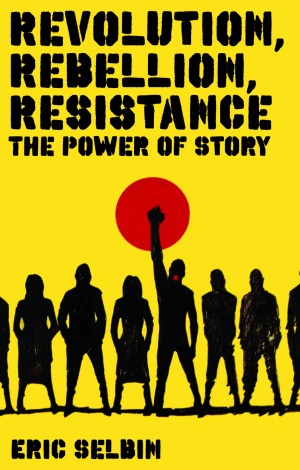Political Science
Why Do Revolutions Occur?
Open gallery

Why do revolutions occur in some countries but not others?
Traditionally, social scientists have looked at factors such as a country’s economic situation or the strength of the government in power to predict where revolutions will happen and why.
However, such methods have not been very successful in predicting revolutions. For example, virtually no one predicted the “color” revolutions that took place in Eastern European countries in the early 2000s.
Eric Selbin, a political science professor and University Scholar at Southwestern University who studies revolutions, believes social scientists have been overlooking a key indicator: the power of cultural factors such as storytelling and the use of symbolism.
That’s the theme of his latest book, Revolution, Rebellion, Resistance: The Power of Story. The book is based on more than 20 years of research in countries such as Nicaragua, Grenada, Mexico, Spain and France.
In doing his research, Selbin says he was struck by how many times people told him stories. “I was taking stories and trying to reduce them to data instead of listening to their stories,” he says. “As I reflected more and more on this, I realized the stories matter just as much or more than what the economic situation was or whether the regime was strong or weak.”
Selbin says stories allow us to imagine the transformation of our lives and our world. “If you have people who can animate a powerful and compelling story about revolution, then suddenly it becomes a possibility,” he says. “Stories…can obviate economic disadvantage, surmount socio-cultural mores and even triumph over military might.”
And if we can get a sense about what a population’s attitude is toward such stories, we have a better chance of predicting whether revolutions are more likely there. Selbin says this helps explain why revolutions have not occurred in places where the economy is bad, such as Haiti, Honduras and Somalia.
“Revolutions are more likely to occur in places where it is lauded as grand, glorious and noble than in places where it is seen as a bad idea and a cause of trouble,” he says. In Haiti, for example, he says revolution is regarded negatively because that country witnessed one of the world’s greatest revolutions, but it failed.
Selbin notes that stories also can help sustain people during the challenging times of a revolution. “We can never underestimate how much people are willing to struggle so their children can have a better life,” he says.
In his book, for example, Selbin recalls how in 1958, when the revolutionary struggle in Cuba still seemed to hang in the balance, revolutionary leader Fidel Castro drew on a story from Cuba’s 1895 war of independence from Spain. The story tells about how two of the struggle’s greatest heroes set fire to the island’s profitable sugar cane fields as a signal of commitment, defiance and the readiness of the Cuban people to sacrifice everything for their independence from Spain. Castro had two of his lieutenants replicate the famous “incendiary march.”
“It proved to be a brilliant tactical stroke which succeeded on several levels: militarily, psychologically and culturally,” Selbin says.
Similarly, he says a Nicaraguan revolutionary from the earliest years told him how he and others were inspired by “the triumph” in Cuba.
“Circumstantial evidence suggests that when people do choose to resist, rebel or take up the revolutionary banner, it is in part because they are aware that other people in other places at other times under other circumstances have done so,” Selbin says.
Since its publication in January 2010, Selbin says the book has gained an audience much larger than he ever expected. The book has already been published in German, and translations into Arabic, Spanish and Turkish are in the works.
“It’s a reminder that the topic of revolution still catches people’s ear,” he says.
Selbin says his theory is not meant to replace traditional social science methods, but rather to supplement them.
“We still have to be systematic and rigorous, but we need to look at the whole picture,” he says. “Stories are another tool of the trade that can be turned to building a better understanding of who we are and where we are going.”
Selbin says student researchers can be some of the best story-gatherers because they often go abroad and come back with stories. The Internet also has made it easier to gather stories.
Selbin says he hopes his book will change how people teach about revolutions. He says some chapters of his book are already being assigned to students in graduate classes that focus on revolutions.
He also says his ideas can be applied to current situations such as the rise of the Tea Party movement in the United States, which he notes is more a case of resistance or rebellion than revolution.
“If we want to understand the Tea Party movement, we need to understand their stories,” he says.














